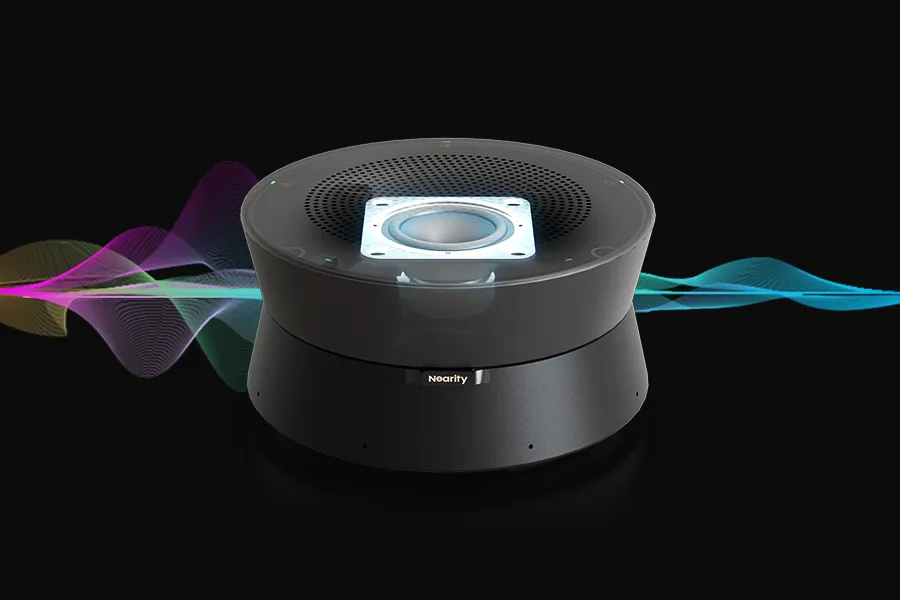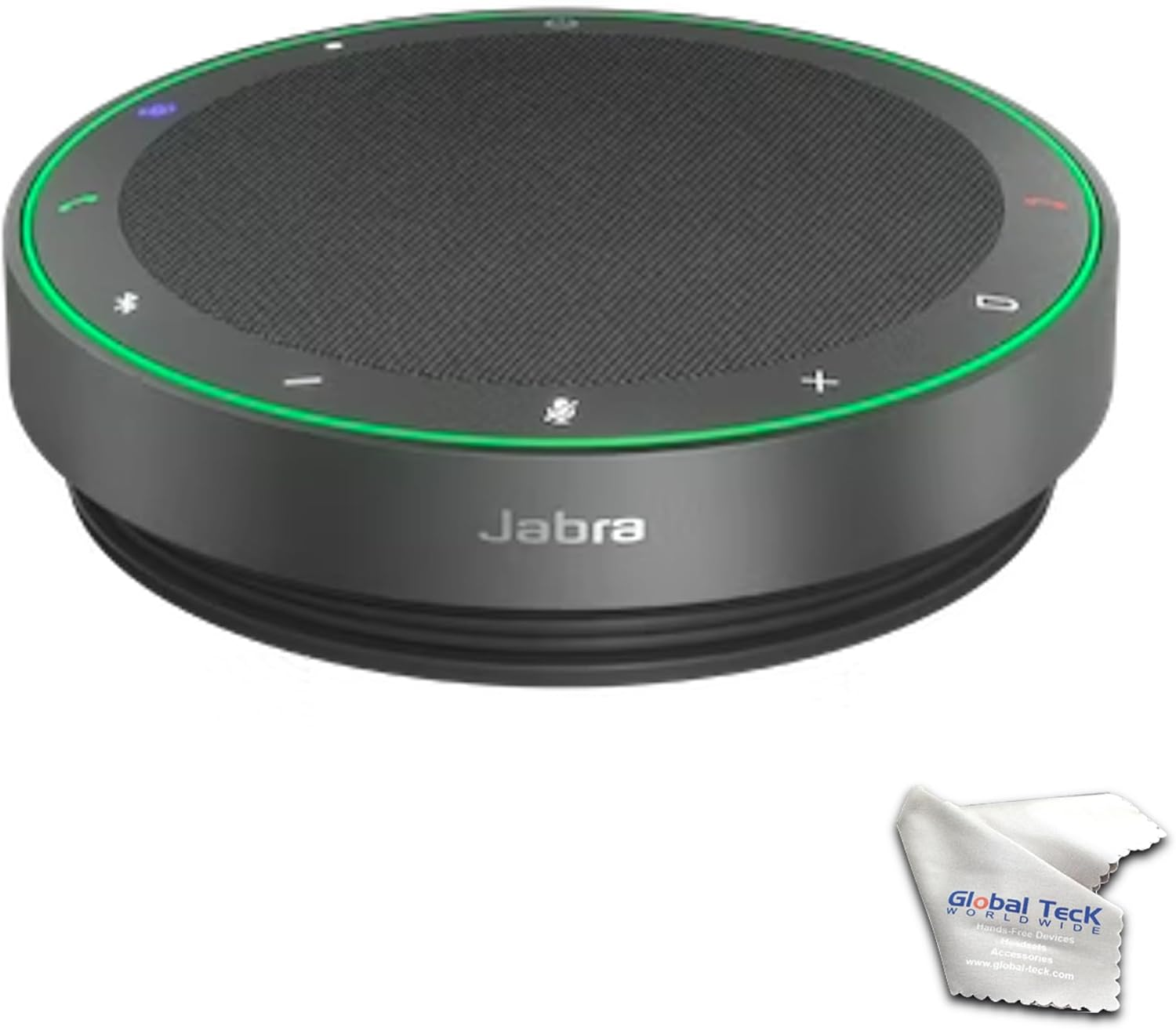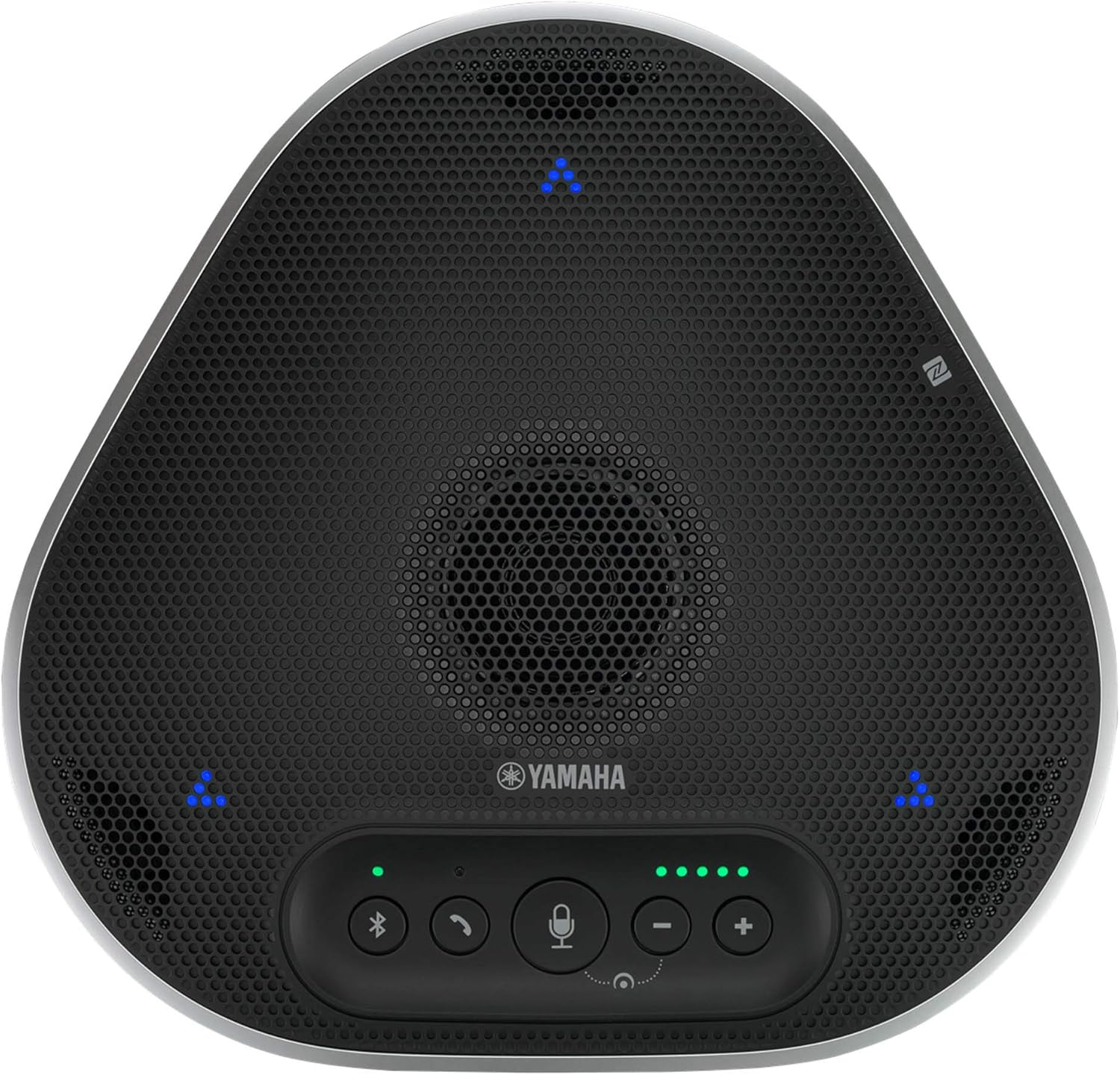Virtual meetings are often disrupted by background noise, Bluetooth connectivity issues, and microphone limitations. This guide delves into the types of background noise that affect communication and offers practical advice on how to overcome these challenges. It also compares different microphone types, helping professionals select the best equipment for clear, uninterrupted meetings. Key recommendations include the Nearity A20S, Jabra Speak2 75 MS, and other top peripheral microphones designed to tackle noise and enhance audio quality.
When you’re in the middle of an important conference call or virtual meeting, it’s hard not to be frustrated by unexpected audio hiccups. From the constant interruption of background noise in meetings to annoying Bluetooth disconnections, your communication can feel more like a struggle than a smooth conversation. In this post, we’re breaking down the most common meeting audio challenges and providing actionable solutions that can change the way you connect with colleagues, clients, and partners.
Before we dive in, ask yourself: Have you ever found yourself missing critical information during a meeting because you just couldn’t hear over the ambient chatter? Are your remote meetings suffering because everyone’s background noise is overwhelming the conversation? And what about those pesky Bluetooth problems that keep you from connecting seamlessly? We’re here to help you navigate these issues head on.
The First Hurdle of Meeting Audio: Background Noise in Meetings
When discussing “background noise in meetings,” it’s more than just a mere distraction—it’s a potential productivity killer. Every day, countless professionals around the world struggle to keep their calls free of unwanted noise. Whether it’s the sound of traffic, children playing in the background, or a snoring pet, these disturbances affect everyone. Let’s dig into what causes the problem and why remote participants often hear these noises louder than intended.
The Types of Background Noise in Meetings
Background noise can come in many forms, and understanding its different types is the first step to addressing it. Here are some common examples you might encounter:
- Ambient Noise: This refers to the continuous hum of everyday life. Think air conditioners, refrigerators, or the gentle buzz from street traffic if you’re near a busy road. Ambient noise is often low-level but can become intrusive in a quiet virtual meeting environment.
- Intermittent Noise: Unlike ambient noise, this type occurs sporadically. It might be a door slamming, a phone vibrating, or a dog barking. These unpredictable sounds are particularly disruptive because they occur without warning.
- Electronic Interference: With the increase in wireless devices, interference from overlapping signals can affect your audio quality. This is especially true in areas where Wi-Fi and Bluetooth signals are congested, causing a patchy audio experience.
- Echoes and Reverberations: If your meeting room has hard surfaces, sound may bounce around, amplifying background noise and creating a reverberation that makes it hard for listeners to pick up clear audio.
- Human Noise: This includes side conversations or the sound of multiple people talking at once. In a busy office or co-working space, background chatter is almost inevitable.
Each of these noise types plays a role in the overall quality of your meeting audio. For instance, a cozy home office might have low ambient noise but be prone to unpredictable interruptions from family members. Meanwhile, a corporate boardroom could face issues with echo if it hasn’t been properly soundproofed.
Why Remote Participants Hear Background Noise Louder
One peculiar challenge of virtual meetings is that remote participants often claim they hear background noise more clearly than the person on the call might realize. Several factors contribute to this phenomenon:
- Microphone Sensitivity and Gain Settings: Most built-in microphones in laptops and desktops are designed to pick up a wide range of sounds. They can unintentionally capture more background noise even when you are speaking directly into them.
- Acoustic Distance: Remote participants are typically positioned closer to their devices, where the microphone’s pickup pattern makes background noise more prominent. In contrast, you might be further away from your own screen or using noise-cancelling headphones that minimize what you hear in your space.
- Compression and Audio Processing: Many video conferencing platforms employ aggressive audio compression algorithms. While this helps in reducing latency and improving voice clarity, it can also amplify background noise, making it sound louder to those on the other end.
- Echo Cancellation Technology: Some systems aren’t effective at filtering out sounds completely. If your microphone doesn’t have the ability to filter out background disturbances, remote participants may suffer from an overly noisy feed.
- Hardware Quality: The quality of your microphone and audio setup plays a huge role. Low-quality or outdated audio equipment often lacks the advanced noise cancellation features that modern peripheral microphones offer.
Addressing these issues isn’t just about investing in better equipment; it’s also about optimizing your audio settings and choosing the right environment for your calls. For more technical tips on improving your hardware setup, check out our detailed Guide to Best Speakerphone for Every Sized Zoom Meetings post.
The Second Hurdle of Meeting Audio: Continuous Break-Offs of Bluetooth Connection
Bluetooth technology has transformed the way we connect our devices, but it isn’t without its pitfalls—especially when it comes to maintaining a stable connection during a busy meeting. If you’ve ever been frustrated by a colleague’s device disconnecting mid-sentence, you know how detrimental this can be to the flow of conversation.
The Negative Impacts on Meeting Productivity
Bluetooth connection issues can lead to several negative outcomes during your virtual meetings, including:
- Interrupted Communication: Abrupt disconnections not only break your concentration but also lead to missed information. Constant interruptions can derail the natural flow of conversation.
- Increased Background Noise: When a connection is lost and then re-established, there can be audible clicks, static, or sudden bursts of background noise in meetings. These disturbances can make it even more challenging for remote participants to understand what’s being said.
- Frustration and Reduced Engagement: Frequent interruptions can lead to frustration among participants. Over time, this erodes trust in the meeting process and discourages active participation, especially if participants repeatedly have to ask for clarifications.
- Technical Downtime: Every disconnection means a temporary loss of communication. When you’re in the middle of a critical discussion, even a brief disruption can lead to confusion or missed deadlines. This downtime can ripple across your workflow and affect overall productivity.
- Stress and Anxiety: For professionals who rely on seamless communication for their job performance, unstable Bluetooth connections can create unnecessary stress and anxiety, ultimately affecting both the meeting’s outcome and overall job satisfaction.
While technology has come a long way in making our lives easier, these connection issues underscore the necessity for a reliable and stable audio solution. If your meetings are consistently disrupted by Bluetooth connectivity issues, it might be time to explore other audio solutions that can better handle the rigors of professional use.
The Difference of Meeting Audio: Computers with Peripheral Microphones VS Built-in Microphones
One of the ongoing debates in the realm of meeting audio is whether to use an external (peripheral) microphone or to stick with your computer’s built-in system. The decision can have a huge impact on everything from clarity to how much background noise in meetings you have to deal with.
Built-in Microphones: Convenience Meets Limitations
Most laptops and desktops come with built-in microphones that offer the convenience of “plug and play.” However, there are a few caveats:
- Limited Noise Cancellation: Built-in microphones are generally designed to capture a wide array of sounds. This means they are more prone to picking up background noise, which can be particularly problematic in noisy environments.
- Basic Audio Processing: Although many modern devices incorporate some form of noise suppression, it’s typically not as effective as what you’d find in a dedicated peripheral microphone.
- Hardware Constraints: The compact nature of built-in microphones means there’s less room for advanced hardware components that can filter out background noise in meetings.
While convenient, built-in microphones tend to fall short when higher audio fidelity is required, especially in professional and high-stakes environments.
Peripheral Microphones: Enhanced Clarity and Noise Control
Peripheral, or external, microphones are designed with professional audio standards in mind. They offer several advantages over built-in solutions:
- Advanced Noise Cancellation: Many external microphones are equipped with specialized noise cancellation features, designed to filter out unwanted background noise in meetings. This can be particularly useful in environments where ambient noise or background chatter is an issue.
- Better Audio Pickup: With options like omnidirectional or unidirectional pickup patterns, peripheral microphones can be tailored to capture sound more accurately. This means clearer audio for every participant.
- Adaptability: External microphones often come with additional settings for automatic gain control and echo reduction, ensuring that even when background noise in meetings is high, your voice remains front and center.
- Connectivity Options: Whether you’re using USB, Bluetooth, or even specialized wireless protocols, external microphones typically offer more reliable connectivity options, mitigating issues like those frustrating Bluetooth disconnections.
👉Join us as we put the Nearity A20S conference speakermic's audio pickup to the test. 🚀Are you ready to hear crystal-clear audio excellence!
For professionals who prioritize clear communication, investing in a good quality peripheral microphone can be a game changer. It may cost a bit more upfront, but the benefits in clarity, noise suppression, and overall meeting productivity make it worthwhile.
How to Choose? Best Background Noise Cancelling Peripheral Microphones for Meetings
When it comes to overcoming background noise in meetings, the right peripheral microphone can make all the difference. We’ve reviewed some of the best options available on the market, each designed to handle the challenges of noisy environments and frequent Bluetooth connection issues. Below, you’ll find detailed breakdowns of four leading products.
Nearity A20S Speakerphone Noise Cancelling

The Nearity A20S has been making waves as a portable, reliable solution for those seeking to cut through background noise in meetings. Here’s why it could be the right fit for you:
Key Features:
- Portable USB Speakerphone System: Ideal for professionals on the go.
- 360° Noise-Suppressing Voice Pickup: Captures voice clearly from any direction while effectively filtering out ambient sounds.
- Full Duplex & Automatic Gain Control: Ensures seamless two-way communication without distortion.
- Eight Omnidirectional MEMS Microphones: Provides a detailed pickup of your voice while minimizing background interference.
- Daisy Chain Technology for up to 6 Units: Expandable audio setup for larger meeting rooms.
- USB & UTP Ethernet Cable Included: Flexible connectivity options for various setups.
- Compatible with Windows, macOS & Linux: Perfect for cross-platform use.
With its array of advanced features, the Nearity A20S is a solid choice for professionals who frequently tackle background noise in meetings and value high-quality audio clarity. It’s particularly useful if you need to set up multiple units across a larger conference room.
Jabra Speak2 75 MS (Teams) Bluetooth Speakerphone

If your workflow relies heavily on Microsoft Teams and you’re frequently dealing with Bluetooth connectivity issues, the Jabra Speak2 75 MS may be your best bet. This device is optimized for digital collaboration and designed to address common audio challenges.
Key Features:
- Super-Wideband, Full-Range 65mm Speaker: Offers crisp, clear audio output for every participant.
- 360° Omnidirectional Microphone: Captures sound from all directions, reducing the impact of background noise.
- Optimized for Microsoft Teams: Ensures seamless integration and maximum compatibility.
- Includes USB-A Bluetooth Adapter: Offers enhanced connectivity to minimize dropouts.
- Up to 32 Hours of Talk Time: Extended battery life for long meetings.
- Voice Level Normalization: Keeps your voice at a consistent volume regardless of background noise.
- Programmable Smart Button: Customizable controls make it a user-friendly tool.
- IP64 Water and Dust Protection: Built to withstand challenging environments.
- Connect via Bluetooth 5.2 up to 98' Away: Provides a wide range of reliable connectivity.
- Plug-and-Play, Portable Design: No complicated setups required.
This speakerphone is an excellent choice for teams that need robust performance without sacrificing mobility. Its strong emphasis on Microsoft Teams integration makes it particularly attractive for businesses entrenched in the Microsoft ecosystem.
Yamaha YVC-330 Speakerphone Noise Cancelling

Another strong contender in the market is the Yamaha YVC-330. Designed to cater to a variety of devices and conferencing systems, it offers high compatibility and effective noise management strategies.
Key Features:
- Connects over USB, Bluetooth & NFC: Multiple connectivity options ensure that you’re always connected, no matter what device you’re using.
- SoundCap Technology Minimizes Echoes: Reduces unwanted reverberations to enhance call clarity.
- Noise Cancellation & Auto-Muting: Automatically mutes background noise, ensuring clear communication.
- 3 Unidirectional Mics, 360° Pickup: Precisely captures your voice while filtering out extraneous sounds.
- Easy-to-Use Interface: Intuitive controls that simplify setup and use.
- Mac, Windows, iOS & Android Compatibility: Works seamlessly across major platforms.
- Plug & Play Operation: No need for complicated installations.
- Compatible with Any UC Application: Whether you use Zoom, Teams, or another UC platform, it’s built to perform.
- Power over USB: Convenient power options for flexibility.
- USB Cable Included: Everything you need for a quick, hassle-free setup.
The Yamaha YVC-330 is designed for versatility and ease of use. Its ability to minimize echoes and automatically mute background noise makes it particularly effective in environments where meeting audio quality is constantly challenged by unpredictable background noise in meetings.
Poly Sync 60 Speakerphone Noise Cancelling

Poly Sync 60 stands out for its robust set of features geared towards maintaining high-quality audio throughout your meetings. This solution is ideal for both small groups and larger conference settings.
Key Features:
- USB-A, USB-C & Bluetooth Connectivity: Offers multiple connection options to suit your devices.
- 6 x Microphones: Multiple microphones ensure wide area coverage and clear sound pickup.
- Dual 50mm Speaker Drivers: Powerful speakers that deliver crisp, loud audio.
- Noise & Echo Reduction: Significantly reduces audio disturbances, making sure your voice is always the focus.
- 1 x USB Input | 1 x USB-A Passthrough: Enhances versatility in your setup, allowing additional device connections.
- 2 x USB-A Charging Outputs: Extra convenience for powering up other peripherals.
- Touch-Sensitive Controls: Modern interface that makes it simple to adjust settings on the fly.
- Zoom Certified: Guaranteed quality and performance on one of the most popular conferencing platforms.
- Works with Windows 10 & macOS: Broad compatibility for varied professional environments.
The Poly Sync 60 is a top-tier option for those who demand both quality and versatility. Its comprehensive approach to noise reduction and ease of connectivity makes it a must-have for professionals striving to eliminate background noise in meetings and maintain a high level of clarity.
Conclusion
Audio quality is central to successful meetings. Whether you’re dealing with persistent background noise in meetings or grappling with unreliable Bluetooth connections, understanding the challenges—and the solutions—can radically improve your communication efficiency. In today’s remote work era, every meeting counts, and your ability to connect clearly with your colleagues not only influences productivity but also builds trust and professionalism.
For more tips on optimizing remote work setups, check out our article on Essential Equipment for Remote Meetings.
We hope you found this deep dive into meeting audio both informative and actionable. Whether you choose the Nearity A20S, Jabra Speak2 75 MS, Yamaha YVC-330, or Poly Sync 60, the goal remains the same: to ensure that your voice is heard clearly and that background noise in meetings is no longer an uninvited guest at your virtual table!










